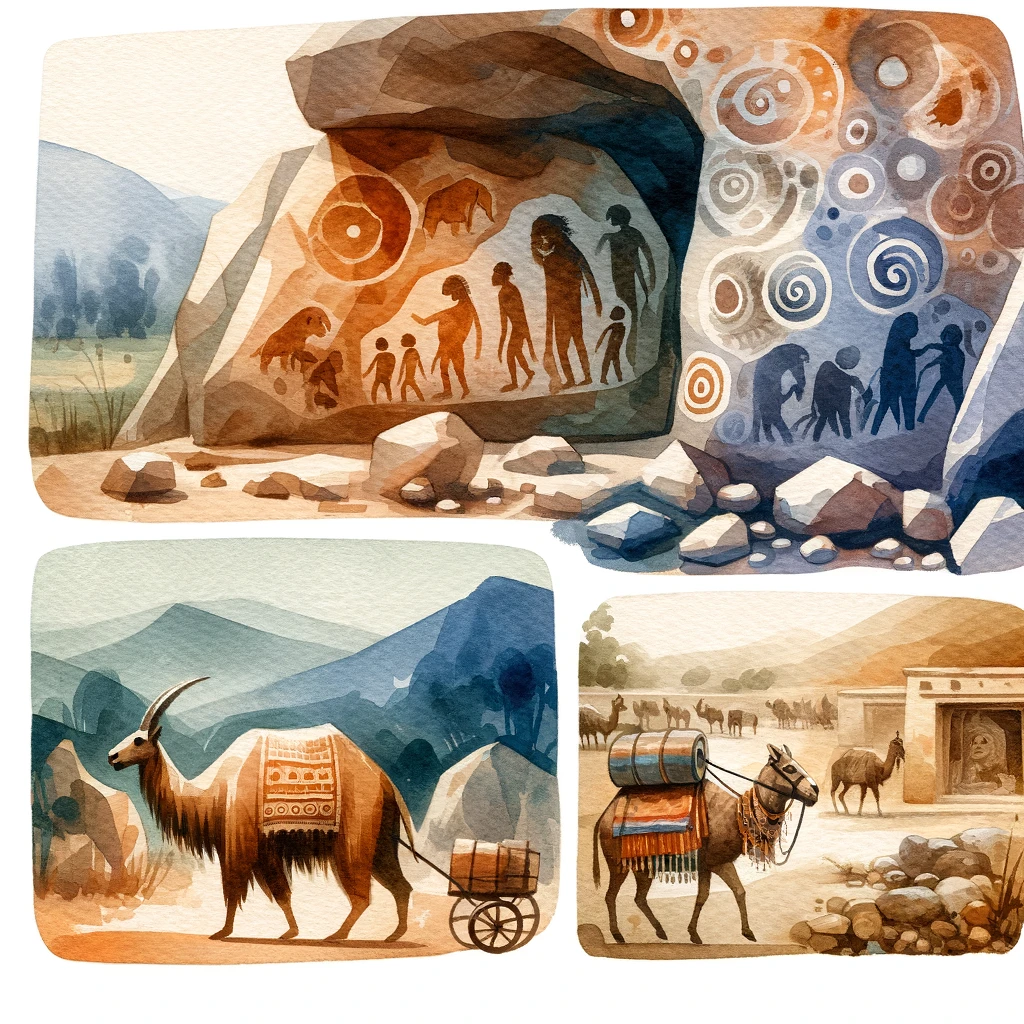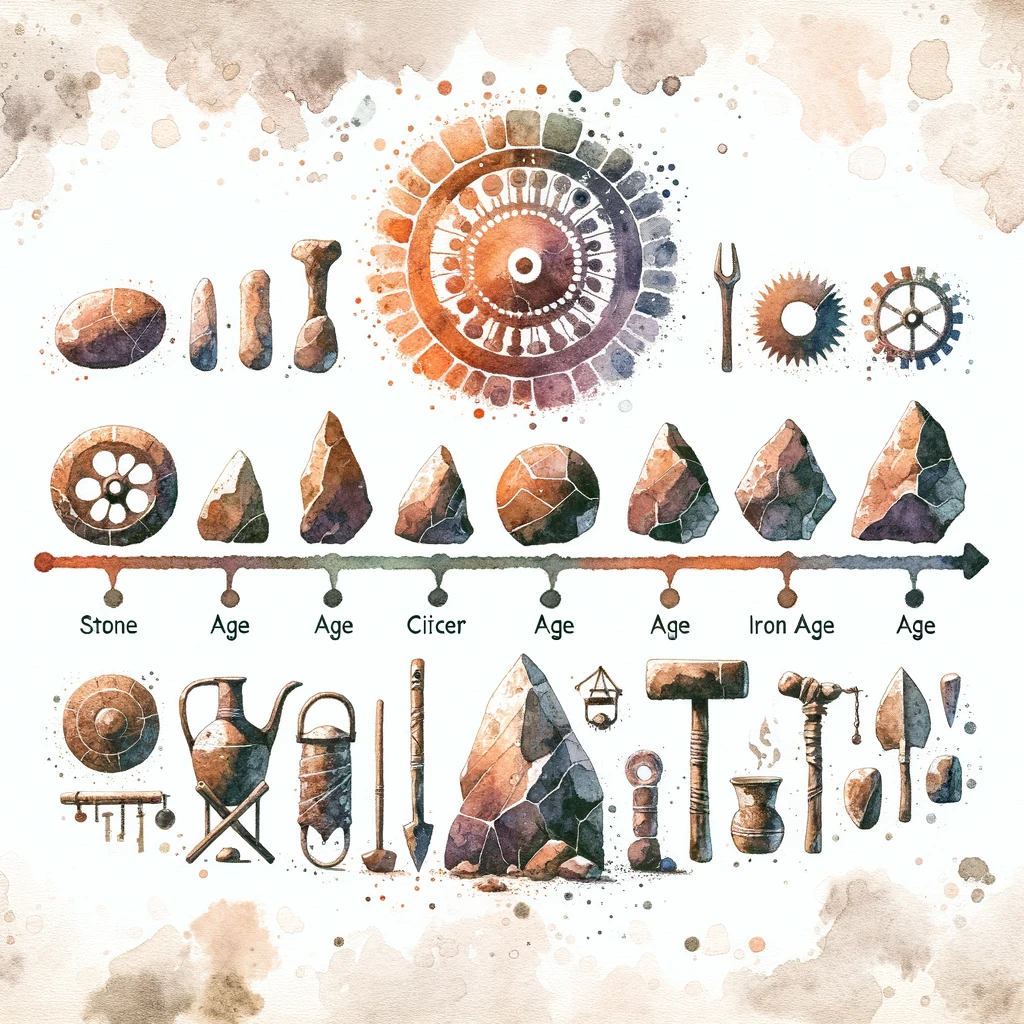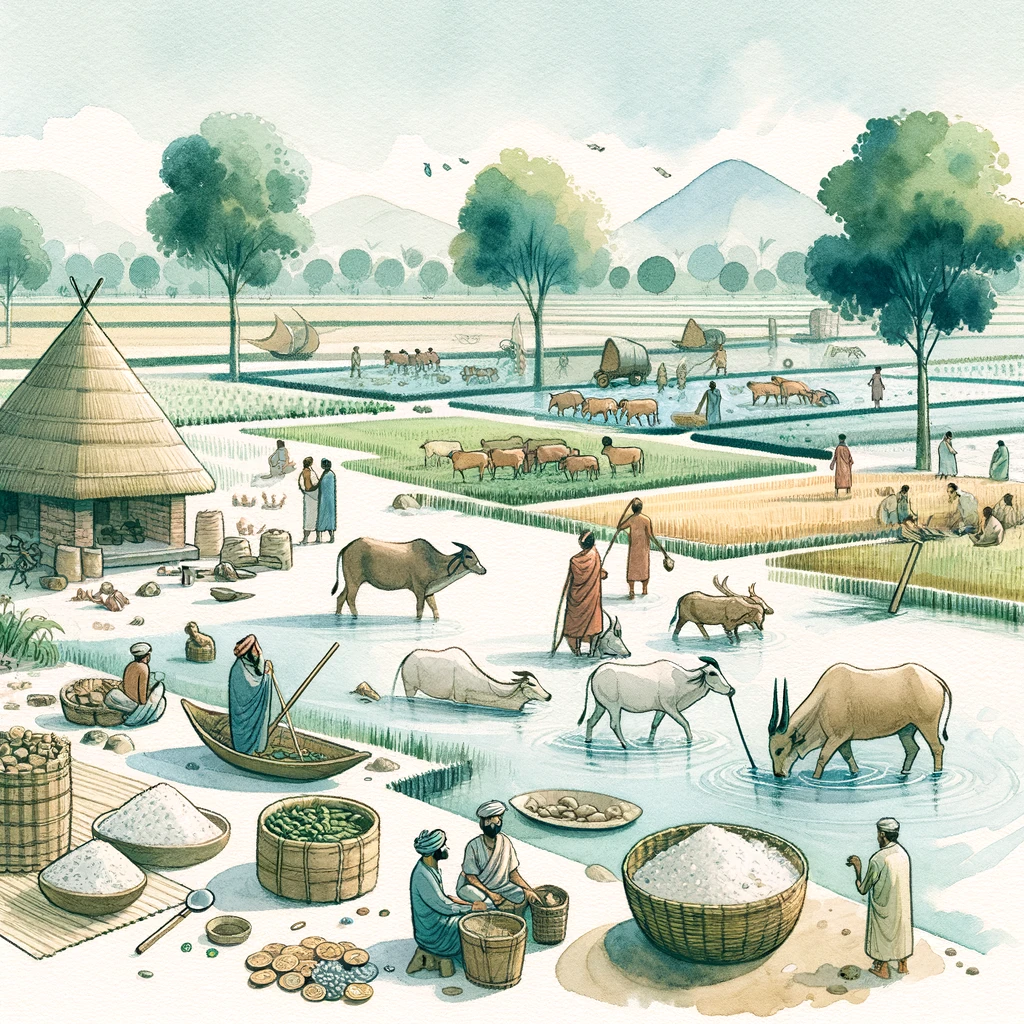India is home to numerous prehistoric sites that offer invaluable insights into the lives and cultures of early humans. Among these, the Bhimbetka Rock Shelters, Hunsgi Valley, and Mehrgarh are particularly significant. These sites provide a glimpse into the artistic, technological, and social developments of prehistoric communities in the Indian subcontinent.

Bhimbetka Rock Shelters
Location: The Bhimbetka Rock Shelters are located in the Raisen District of Madhya Pradesh, India. These shelters lie within the Vindhyan mountain range and are a UNESCO World Heritage Site.
Historical Significance: Bhimbetka is one of the oldest known prehistoric sites in India, with evidence of human habitation dating back to the Palaeolithic period.
Key Features:
Rock Paintings:
- The Bhimbetka shelters are renowned for their extensive rock paintings. It spans several periods from the Upper Palaeolithic to the Medieval period.
- These paintings depict various scenes, including hunting, dancing, and domestic activities, providing insights into the daily lives and cultural practices of prehistoric people.
- The use of natural pigments and the depiction of animals, humans, and geometric patterns showcase the artistic skills and symbolic thinking of early humans.
Archaeological Finds:
- Excavations at Bhimbetka have revealed a variety of stone tools, such as hand axes, cleavers, and blades, indicating continuous human occupation.
- The site has also yielded evidence of early human settlement, including remains of hearths and food processing areas.
Cultural Layers:
- The cultural layers at Bhimbetka provide a chronological sequence of human development, from simple hunter-gatherer societies to more complex, settled communities.
- The progression of tools and artifacts reflects advancements in technology and adaptation to changing environmental conditions.
Importance: The Bhimbetka Rock Shelters are a crucial source of information about prehistoric art and human evolution in South Asia. They demonstrate the cognitive and cultural capabilities of early humans and their ability to adapt to diverse environments.
Hunsgi Valley
Location: The Hunsgi Valley is located in the Raichur District of Karnataka, India. This region is part of the Deccan Plateau and has been a focal point for prehistoric studies.
Historical Significance: Hunsgi Valley is an important Lower Palaeolithic site, known for its rich assemblage of stone tools and evidence of early human activity.
Key Features:
Stone Tools:
- The valley is notable for its extensive collection of Acheulean tools, such as hand axes and cleavers. These tools were crafted using local raw materials and exhibit advanced flaking techniques.
- The presence of these tools suggests that early humans in the region were skilled toolmakers who utilized available resources effectively.
Habitational Evidence:
- Archaeological excavations have uncovered several habitation sites within the valley, indicating that it was a favorable area for early human settlement.
- The discovery of hearths and animal bones suggests that the inhabitants engaged in hunting and cooking, reflecting a well-adapted subsistence strategy.
Environmental Context:
- The valley’s diverse landscape, with its river systems and rocky outcrops, provided an ideal habitat for early humans.
- The availability of water, raw materials for toolmaking, and a variety of flora and fauna made Hunsgi Valley a suitable location for sustained human occupation.
Importance: Hunsgi Valley provides critical evidence of early human life on the Indian subcontinent. The site’s well-preserved stone tools and habitation sites offer insights into the technological and social adaptations of Lower Palaeolithic communities.
Mehrgarh
Location: Mehrgarh is located in the Kacchi Plain of Balochistan, Pakistan, near the Bolan Pass. This site is considered one of the earliest centers of agriculture and settled life in South Asia.
Historical Significance: Mehrgarh dates back to around 7000 BCE and marks the transition from hunting-gathering societies to agricultural communities.
Key Features:
Early Agriculture:
- Mehrgarh is one of the earliest known sites where evidence of agriculture has been found. The inhabitants cultivated crops such as wheat and barley and domesticated animals like sheep, goats, and cattle.
- The shift to agriculture allowed for a more stable and settled lifestyle, leading to the development of permanent structures and complex societies.
Settlements:
- Excavations have revealed mud-brick houses, storage facilities, and granaries, indicating a well-organized community with advanced architectural skills.
- The presence of large storage areas suggests the ability to produce and store surplus food, a key factor in the development of complex societies.
Artifacts:
- Mehrgarh has yielded a rich collection of artifacts, including pottery, beads, and tools made from stone and bone. These items reflect the artistic and technological capabilities of the inhabitants.
- The discovery of dental practices, such as drilling in human teeth, points to advanced knowledge of medical procedures.
Importance: Mehrgarh is a pivotal site for understanding the origins of agriculture and settled life in South Asia. The archaeological evidence from Mehrgarh provides a comprehensive view of the transition from nomadic to settled societies and the technological advancements that accompanied this shift.
Conclusion
The major prehistoric sites of Bhimbetka Rock Shelters, Hunsgi Valley, and Mehrgarh offer invaluable insights into the early human history of the Indian subcontinent. Each site provides unique evidence of the technological, artistic, and social developments of prehistoric communities. For UPSC aspirants, understanding these sites is crucial for appreciating the deep historical roots and cultural evolution of India.


